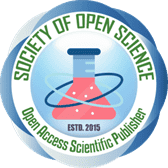Submissions
Submission Preparation Checklist
As part of the submission process, authors are required to check off their submission's compliance with all of the following items, and submissions may be returned to authors that do not adhere to these guidelines.- Before submitting your manuscript, ensure that your research aligns with the journal’s specific focus and scope as described in the Aims and Scope section.
- Prepare a cover letter that briefly outlines the significance, novelty, and suitability of your research for publication in Advances in BioScience.
- Carefully review the Instructions for Authors to confirm that your manuscript complies with the required structure (e.g., Introduction, Methods, Results, Discussion, Conclusion), formatting requirements (e.g., font, spacing, margins), and referencing style (e.g., Vancouver (Numbered) style).
- Ensure that your submission is original, has not been published elsewhere, and is not under consideration by another journal.
- Verify that the authorship order is correct and that all authors have made significant contributions. Include complete and accurate author details—full names, affiliations, email addresses, and ORCID IDs—and obtain written confirmation from all co-authors agreeing to the submission. Clearly designate a corresponding author who will handle all communication with the journal throughout the review and publication process.
- Proofread your manuscript thoroughly to remove grammatical errors, typos, and formatting inconsistencies. Consider seeking feedback from colleagues or experts in the field for further improvement.
- Include high-resolution figures and tables with clear captions and legends, ensuring they are properly referenced in the text. If applicable, obtain and submit permissions for any reproduced figures, tables, or other copyrighted material.
- Provide DOIs for all references where available, and include line numbers in the left margin to facilitate review.
- To verify originality, use a plagiarism detection tool to identify and correct any unattributed content.
- Disclose any conflicts of interest, competing interests, or financial disclosures for all authors in a dedicated section following the main text but before the references.
- Confirm that your research complies with ethical standards and guidelines, and clearly state any ethical approvals or permissions obtained for studies involving human or animal subjects.
- Finally, submit your manuscript electronically as a Microsoft Word (.docx) document through the Advances in BioScience online submission system, ensuring that all required files—manuscript, figures, tables, and supplemental materials—are properly uploaded.
Articles
Section default policyCopyright Notice
Articles accepted by the Advances in BioScience (ISSN 2583-0058) are published under the Creative Commons CC-BY 4.0 License (http://creativecommons.org/licenses/by/4.0/). The CC license ensures that the article will be available as widely as possible and that the article can be included in any scientific archive. Under the terms of this license:
- Author(s) retain ownership of the copyright of their articles.
- Author(s) grant a license to publish the article in the Advances in BioScience (ISSN 2583-0058) and identify itself as the original publisher.
- Authors also grant any third party the right to use the article freely as long as its integrity is maintained and its original authors, citation details and publisher are identified.
- The Creative Commons Attribution License 4.0 formalizes these and other terms and conditions of publishing articles.
Privacy Statement
The names and email addresses entered in this journal site will be used exclusively for the stated purposes of this journal and will not be made available for any other purpose or to any other party.





